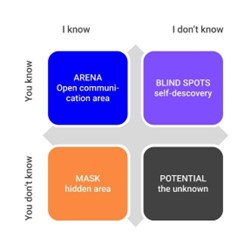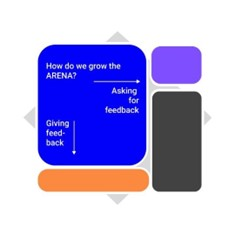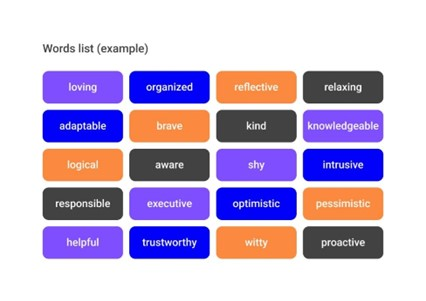A recent study by the consulting group, One Philosophy, entitled "Resilience. The Battle for the Future", documents lessons of resilience drawn from one of the most difficult years for Ukrainian: 2022, the year when the full-scale Russian invasion of the country began. The majority of the company executives surveyed in the study reported that their team is their foundation, on which they rely and lean.
Other researchers have confirmed this finding in other studies carried out in various international contexts. These studies appear to come to a unanimous conclusion on the question of organizational resilience. When organizations continue to develop and grow despite turbulent, highly uncertain, or unpredictable circumstances, – the reason is that the people in the organization know that they matter.
It is the people, with their ability to deal with crises, to recover from high stress, to adapt in a constructive way, and to continue to grow, that is the "secret" of team resilience. At the same time, team resilience is not simply the sum of the resilience of its members. The unique ingredients that transform individual team members’ resilience into team resilience also need to be present. A key ingredient, and, in my opinion, the most crucial one, is trust.
During team strategizing sessions, I often ask people to describe what they would like their team to look like in 5-10 years. Naturally, each group has its unique answers, but almost without exception, someone in every group mentions the following: "I am accepted as I am; I can trust others." People dream of feeling free in their relationships with colleagues, without the need to wear "social masks." People want to know enough about another person to be able to trust them.
Many scholars have thought about trust, studied it, and analyzed it into its components. Yet one feature of trust remains indisputable: it takes time to build trust.
How can we gain time, and is it possible to speed up the process of building trust between people? Yes, it is. One of the tools that can help with this goal is the story of “Johari’s Window.” This tool helps with identifying the differences between how you see yourself and how others see you, and suggests steps to reduce the differences. The smaller the difference, the more effective, supportive and constructive team interactions can be.
The Johari Window Model is based on two dimensions: what I know or do not know about myself, and what do others know or do not know about me. Various combinations of these statements produce four zones of knowledge: Open (Arena), Hidden (Mask), Blind (Blind Spots), and Unknown (Potential).

When we first meet in a team and have a short interaction, we spend most of our time in the Hidden zone. Others know little about us; we know only some personal and professional information about others. Over time, if we share information about ourselves and take an interest in the lives of others, our Hidden zone shrinks, and our Arena expands.
 Only when things are open can we begin to be productive in finding adaptive mechanisms for interactions with others. When there is openness in a relationship, we can ask for support or offer help. Resilience needs openness in order to grow. We can increase the open zone through both personal initiative and organizational practices - for example, through feedback.
Only when things are open can we begin to be productive in finding adaptive mechanisms for interactions with others. When there is openness in a relationship, we can ask for support or offer help. Resilience needs openness in order to grow. We can increase the open zone through both personal initiative and organizational practices - for example, through feedback.
By asking for feedback from colleagues, we learn how others understand our words and behaviours, which do not always coincide with the meaning we intend to convey. By analyzing the feedback and considering it in relation to our personal development, we can narrow down the space of the Blind Spots. Often, it is enough to explain your intentions more thoroughly for the Blind Spots to grow smaller. On the other hand, sometimes receiving feedback helps you realize that it is time to change your own behavioral patterns.
 When we initiate feedback, it is not just about individual growth. In such a conversation, you allow your colleague to get to know you better and thus to understand you better. Feedback here, does not mean a quick ad hoc reaction to a colleague's words or actions, but an intentional and focused conversation that happens outside of office routine. The context for such feedback should allow the parties to talk about: a) specific actions taken by one person that have an impact on the other, and b) how the two parties feel about that impact, as well as c) what are the needs, values and desires behind those feelings. In some cases, such a feedback session may inspire expressions of gratitude. In others, we may make a suggestion or a request regarding how the other person could act differently and how this would enrich our relationship.
When we initiate feedback, it is not just about individual growth. In such a conversation, you allow your colleague to get to know you better and thus to understand you better. Feedback here, does not mean a quick ad hoc reaction to a colleague's words or actions, but an intentional and focused conversation that happens outside of office routine. The context for such feedback should allow the parties to talk about: a) specific actions taken by one person that have an impact on the other, and b) how the two parties feel about that impact, as well as c) what are the needs, values and desires behind those feelings. In some cases, such a feedback session may inspire expressions of gratitude. In others, we may make a suggestion or a request regarding how the other person could act differently and how this would enrich our relationship.
In organizations with an open organizational culture, such practices of giving and taking feedback are embedded in corporate rules, team practices, and rituals.
Consider this trust-building exercise, based on the Johari Window Model. The essence of the exercise is that, as a team, we discuss the Window of each team member, identify hidden areas and/or blind spots, and find constructive ways to reduce them.
In order to approach this process, set aside a specific time and place for a team meeting. During the meeting, make sure that no other work-related issues are discussed, do not make operational decisions, or plan future activities. Ensure that the meeting time is dedicated to building trust.
It may be helpful to start with an icebreaker. Next, brief the team on the Johari Window Model and introduce a shared list of qualities. This list of qualities should be prepared in advance. It can include all the traits that your team considers necessary for quality interactions, effective teamwork that achieves the best results, and an encouraging, warm team atmosphere. The optimal list should include 40-60 features. See an example of such a list in the table below. Be sure to adapt this example list to your own team.
To start the exercise, one team member selects the qualities and features they consider to be "theirs" from the shared list and invites others at the meeting to select the qualities that they associate with them as well. Repeat this exercise for each team member. By the end of the exercise, each team member should be associated with 5-7 traits. Each quality can be written on a separate card to facilitate this process.
 Next, work in pairs. Ask your colleague reads out the qualities that he or she associates with you and then you read out the list of qualities that you consider to be “yours.” Divide the cards into three categories: those that are in the Open Area of Johari’s Window (i.e. both you and your colleague associate those traits with you), the ones in the Hidden Zone (i.e. ), and the ones in the Blind Spot (i.e. ).
Next, work in pairs. Ask your colleague reads out the qualities that he or she associates with you and then you read out the list of qualities that you consider to be “yours.” Divide the cards into three categories: those that are in the Open Area of Johari’s Window (i.e. both you and your colleague associate those traits with you), the ones in the Hidden Zone (i.e. ), and the ones in the Blind Spot (i.e. ).
In your pair discuss the differences between your list and your colleague’s, and ask questions. Consider possible approaches to reducing the blindspot.
Repeat the exercise for your colleague.
The results of this exercise can provide valuable insights for self-discovery and self-exploration. If you want to expand your Open Area by reducing your Mask zone, you think about how to open up more to your colleagues and what you are willing to tell them about yourself. When you seek to reduce your Blind Zone, reach out to your colleagues and ask to receive more frequent feedback. This exercise can be done in threes, fours, or as a whole team (but please note that it is not recommended to apply this exercise for groups of more than 12). In the case of a whole team, it is worth using what is called “the snowball approach”: first work in pairs, then in fours, then all together.
This exercise can have a qualitative impact in team building and in the (re)distribution of roles in the team. It can be useful at the beginning of long-term projects, during changes in the organizational structure, and when new team members are introduced. In each of these cases, the common list may include different sets of traits.
Online tools can be used to create personal Johari’s Windows, such as Mirror, Jamboard, and Padlet.
This exercise requires a certain level of trust and openness in the team, as well as emotional maturity among team member. If you initiate Johari’s Window in a team, please evaluate all the possible benefits and risks. If the level of trust among team members is low or if the team is meeting for the first time, the common list of traits may include more professional qualities. For a deeper understanding of each other and when the level of trust is high, the list may contain quite specific personal features.
Another example of how the Johari’s Window Model can work to deepen your team interactions is in response to a personal request from an employee. Beforehand, all team members should understand the essence of this model (e.g. have a joint training on how to use the model). Anyone who wishes to expand their Open Area zone can ask selected colleagues (one or more) to describe their qualities/traits and then work on self-development based on the information they receive. In such a case, there is no need to create a common list of traits. Answers can also be collected anonymously if the initiator so wishes.
For modern organizations and teams to remain resilient and grow, we have no choice but to nurture trust, talk through cases that can break trust, and develop team habits that foster trusting relationships between people. Hopefully, you will be interested in trying Johari’s Window Model with your team as a way of building trust in your team.
Image by Maria Kokhanska
Author Natalia Bordun